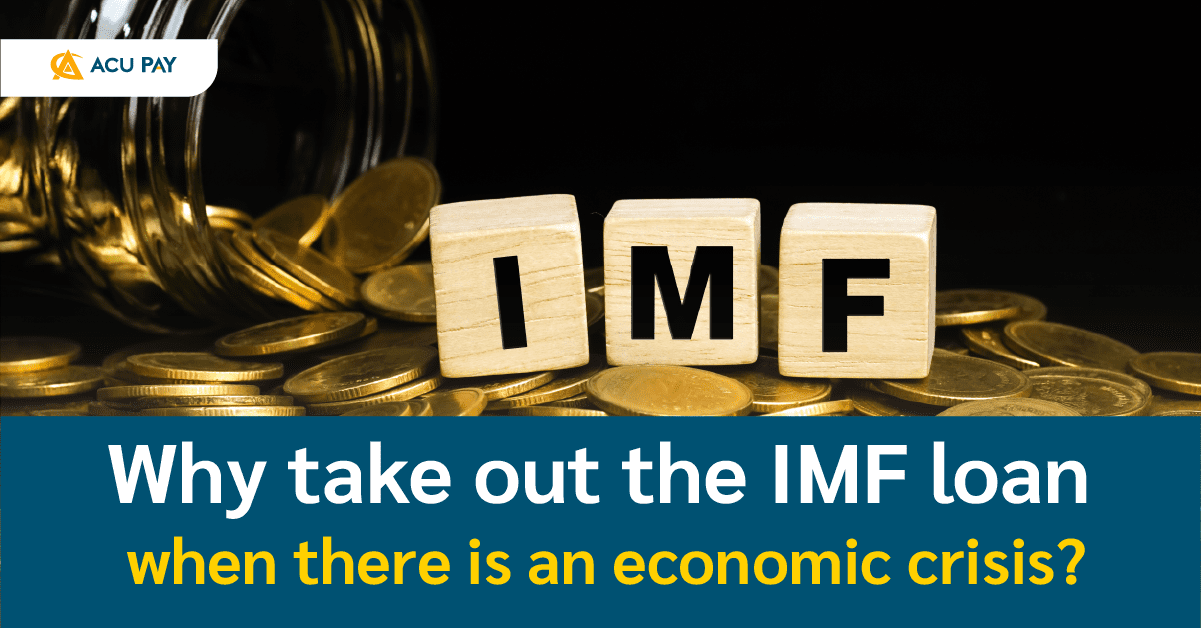

“IMF” many people may be familiar with this word in a historical subject or those who are old enough may remember the time that Thailand had to face a financial crisis in 1997 or the Tom Yum Kung Crisis when the Thai government had to take out a loan from the IMF to restore the poor economy at that time.
Apart from Thailand, there were a lot of other countries taking out a loan from the IMF in the old days. Have you ever wondered why every time that a crisis strikes, most countries decide to get a loan from the IMF? Today, ACU PAY will solve those doubts for you.
IMF or International Monetary Fund is an organization established by the governments of allied countries on July 22, 1944, headquartered in Washington, D.C., USA.
Under the Agreement on the Function of Supporting International Trade in Balanced Growth and Financial Aid for Member States with Balance of Payments, it is stipulated that countries that are World Bank members must also be IMF members.
The IMF’s role and responsibilities include monitoring the economic situation and providing financial assistance to member countries to stabilize their economies around the world. Most of what we see in the news is lending to member countries suffering from balance of payments problems (can’t pay off debt) to help restore stability and economic growth through loan programs.
Every year, there will be a meeting and assigning officials to visit member countries to assess the economic conditions and stability of each country and make policy recommendations. Information will be published in the Global Economic Prospects and the Global Financial Stability Report.
In this regard, loan assistance must be provided through various types of loan programs. This program will have economic policies and measures that must be implemented under the IMF guidelines to prevent further financial problems.
Many people may wonder where the funds come from. The funds of the IMF’s loan program are actually from member countries’ payments for their quota, but the IMF can borrow some additional loans from countries with strong financial status under the New Arrangements to Arrow (NAB).
The “quota” means that when any country joins the IMF, such countries will be allocated a quota of Special Drawing Rights (SDR) to be used in taking out loans.
Each country’s borrowing quotas vary according to their economic size and importance to the global economy. The quota for withdrawal of international reserve assets or Special Drawing Rights (SDRs) is intended to support global trade and financial growth, SDR also serves as an accounting unit for the IMF.
The quota of IMF member countries is very important. The member countries will receive 250 equal basic votes and add one more vote per quota of 100,000 SDR, or can be said that which country has a large quota, that country will have a large increase in votes according to the number of quotas. In addition, member countries can borrow up to 100% of their annual quota and the total must not be more than 300% of their quota.
The quota and policies are determined by the governor’s committee, which will represent the member countries. These governors are usually finance ministers or central bank directors of the country. Each year, there is an annual meeting and a board of governors in each country participates.
The IMF is like an alternative (the last option) for countries that need loans to solve their economic problems. For example, Thailand took out the IMF loans during the Tom Yum Kung crisis, Thailand faced many difficulties, including its conditions that seemed to help solve the problem, but there are many consequences to be exchanged, such as a huge increase in future debt.
For example, the government’s external debt increased by nearly 40 % from 24,700 million U.S. dollars (approximately 8.6 hundred billion) in 1997 to 33,800 million U.S. dollars (approximately 1.2 trillion baht) in 2000.
In addition, Fiscal Consolidation and policy rate fixation at high levels will also cause the Thai economy to deteriorate, causing many businesses to collapse.